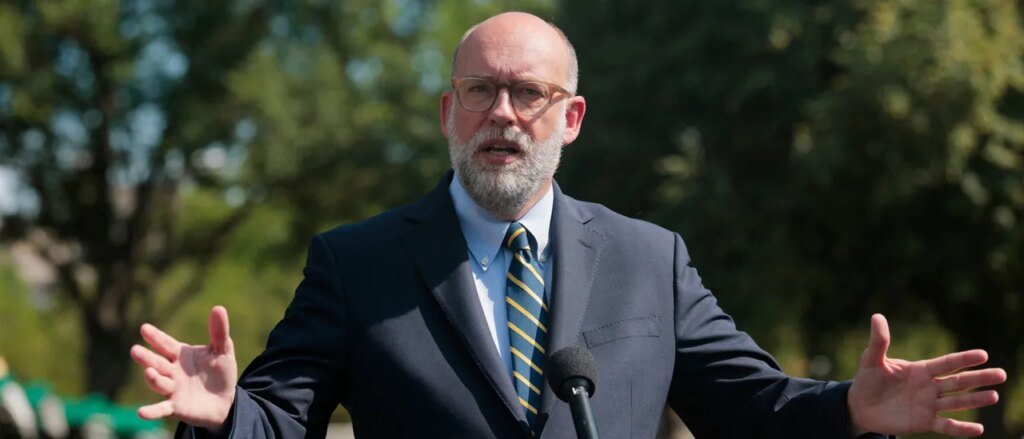Government Shutdown and Federal Agency Restructuring
As the situation in Washington evolves with the latest government impasse, OMB Director Russ Vought is offering an insightful viewpoint amid the chaos. His recent guidance to federal agencies emphasizes the need to rethink the federal workforce’s organization in alignment with the administration’s priorities. Vought is instructing agencies to prepare for potential workforce reductions should the shutdown extend significantly. Instead of merely viewing the shutdown as a disruption, the president is urged to see it as a chance to reassess which parts of government truly need to persist and which could be significantly reduced or even eliminated.
In past budget lapses, the typical approach has been somewhat predictable. Essential agency functions would come to a halt, leaving employees to anxiously update their resume as paychecks paused until funding was reinstated. However, Vought’s memo takes a bolder stance. It not only targets programs that have lapsed funding and don’t align with presidential aims but also highlights those agencies that should prepare to issue layoff notifications alongside the usual furlough procedures.
This moment isn’t simply about brinkmanship. It’s acknowledged that the federal workforce has grown bloated over the years, often catering to political considerations rather than constitutional imperatives. Government shutdowns can serve as a valuable mechanism for forcing Congress to either act or recognize that not every program deserves to survive. By mandating agencies to formulate a plan for potential workforce reductions, Vought aims to instill a sense of accountability in the habitual drift of Washington politics.
Critics have labeled this approach as “cruel” and “reckless.” However, in a government defined by limited powers, isn’t it, perhaps, even harsher to expect taxpayers to shoulder every pet project that has garnered interest from lobbyists? The consequence of inaction or, let’s say, complacency can lead to a creeping paralysis, where debt rises alongside a federal workforce that expands into areas often deemed unnecessary or unconstitutional.
Moreover, Vought’s memo wisely notes that once funding is restored, agencies must modify their plans to ensure they maintain only the minimal necessary workforce to carry out their statutory duties. This precaution is meant to prevent permanent cuts that stem from administrative bloat rather than from actual legal requirements.
The rationale is quite straightforward:
First off, not every federal task holds the same weight. The Constitution doesn’t mandate federal involvement in every niche sector; in fact, it sometimes protects against excessive interference. By implementing a selective reduction process, agencies can focus on what’s deemed essential by the administration, while minimizing redundant or overlapping functions.
Secondly, shutdowns impact all programs equally. If a program can’t prove its legal underpinning or alignment with presidential goals, it stands to reason that its survival might be more about political inertia than anything else.
Thirdly, these occasional cuts can help reset expectations. When Congress realizes the administration is serious about cutting unwanted liabilities, it transforms the political landscape. Instead of treating anything as a sacred cow, interest groups that once enjoyed protection will need to justify their existence.
Of course, executing a reduced workforce plan isn’t a straightforward matter. The process is legally intricate, requiring consideration of various elements like performance metrics, seniority, veteran preferences, rights of appeal, and retention under the Civil Service Act. Nonetheless, the mere act of signaling a willingness to trim some proposals may alter the dynamics if only a few survive the hurdles that may arise.
Opponents might argue that this tactic holds political motives. Yet, the realm of politics is inherently linked to governance. Congress has consistently neglected to tackle the unsustainable expansion of federal departments. If a prolonged shutdown looms on the horizon, there’s an opportunity for the president to approach it with intention.
Certainly, tracks may soften, and that’s acceptable. A disciplined reevaluation doesn’t necessitate extreme measures. Over time, the administration could refine its choices and stand firm rather than retreating altogether. Viewed through the right lens, threatened layoffs could serve not merely as punitive measures against agencies and employees but as tools for reorganization and accountability.
In the days ahead, lawmakers will face a critical decision: Do they want an unyielding defense of federal agencies, or will they prioritize essential needs like border enforcement and economic growth? If Democrats insist on funding the government while simultaneously protecting every interest, Republicans may find themselves forced to concede non-essential spending. Vought’s memos create a framework for making these discussions responsible.
In conclusion, when managed wisely, government shutdowns aren’t crises to be avoided; they can serve as rare opportunities for choice. Vought’s directive allows the Trump administration to determine which programs are essential and which warrant justification from the beginning. If approached with discipline and a legal mindset, this shutdown could represent a significant move toward refining government control and ensuring enforcement consistency. In the next few days or weeks, it’s a chance to clarify Washington’s priorities amidst the chaos.







